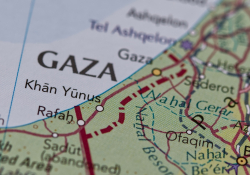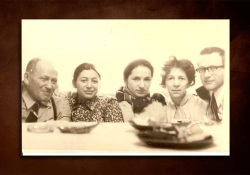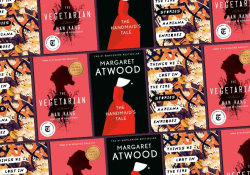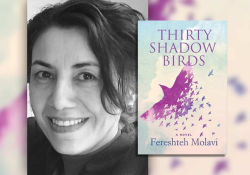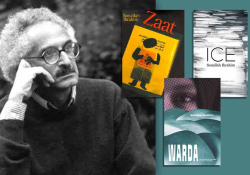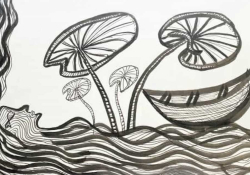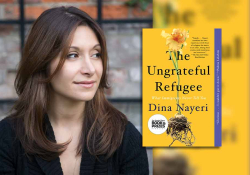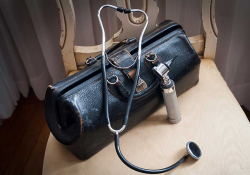Do Not Repeat
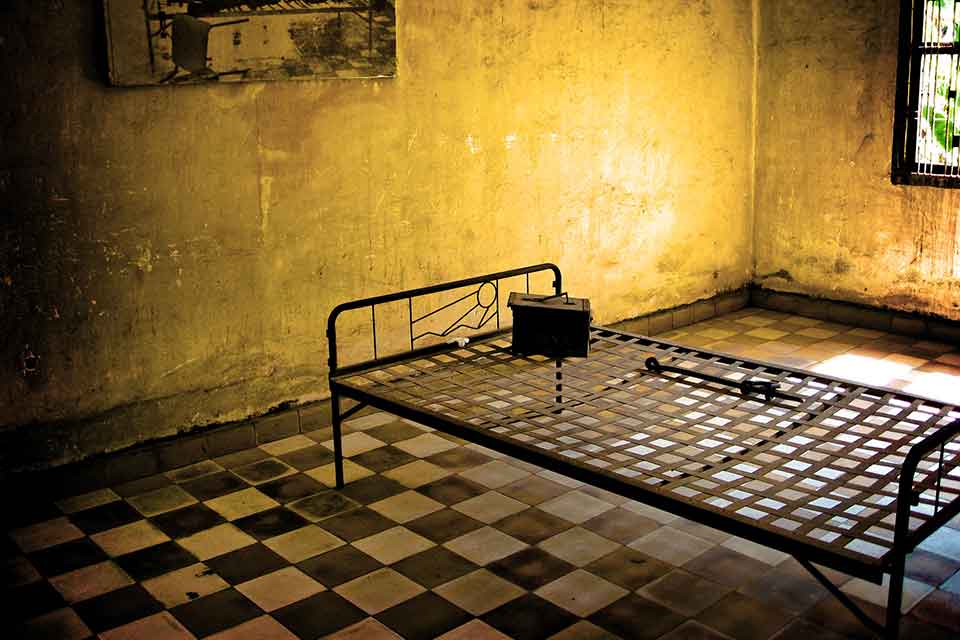
Reflecting on a visit to the Tuol Sleng Genocide Museum in Cambodia and on the Dirty War in Argentina, her home country, Liza Martín wonders what the motto “Nunca Más” really means when wars never cease.
It’s hard to talk about something I never truly lived. It feels as if it is not my place, not my voice that needs to be heard. I never lived through war, death, or hunger. I’ve never even been scared. How could I talk about war, death, and hunger, then? How can I speak fears? But someone has to do it. I refuse to remain silent when those who should be speaking are silenced because of the war. Yes! Wars still occur, repeating themselves in a relentless cycle. How can we still have wars after so many years of studying history in an attempt to prevent the repetition of humanity’s tragedies? Haven’t we learned already, after spending so much time reading, doing research, and teaching, that wars are inherently evil? That no one ever wins?
Well, I guess it makes sense. Most people who have always been insulated from violence think wars only happen in nameless countries, to faceless people; far, very far away from their sheltered bubble.
My dad once told me what it was like to live during the Guerra Sucia (1974–83) in Argentina, when death squads kidnapped everyone who looked subversive and disappeared them—meaning they tortured them, stole the pregnant women’s babies, sold the children to other soldiers, and finally drugged the victims and pushed them out of planes and into the Río de La Plata. To me, and most of my generation, our parents’ stories sound terrifying yet distant. An atrocious mark on our country’s past, but no more than a page in a high school history book. To my dad, those stories are haunting memories. His neighbors disappeared, and several of his friends were tortured—many didn’t survive. My dad was already a musician back then, and his long, curly hair was enough reason to suspect he, too, was a subversive. One day, he tells me, the soldiers took him, and he spent the night in a pitch-black cell. He didn’t know if he was alone, but he could hear the blood-curdling screams of the tortured in the adjacent room. At that instant, all he asked himself was, Am I next?
Argentina’s history still feels distant—even my father’s memories feel distant to me. He was scared. I’m just a secondhand witness to that fear; it’s like remembering a blurry image I never truly saw. It’s no surprise, then, that when I heard about the Cambodian genocide during a history lecture, it didn’t truly impact me. Terrible things happened all the time. Wars were everyday currency in all those nameless countries with faceless people; far, very far away from my sheltered Argentina. Where was Cambodia, anyway? Why should I, on the other side of the world, even care about them?
We understood what happened, both in Argentina and in Cambodia, but empathy eluded us.
Teachers had succeeded in having us memorize the years of our dictatorship and the basic rundown of what happened elsewhere. I know the dates; I know the facts. But I didn’t care. None of us did. We understood what happened, both in Argentina and in Cambodia, but empathy eluded us. If only we were taught to empathize and truly comprehend history as something tangible, emotional, and, most importantly, human—then maybe the significance could have resonated with us. Human. They talked politics, and power, and wealth. They talked winners and losers. But they never emphasized the human experience, which could easily have been ours.
If only they had taught us to care.
* * *
“Doing nothing is not an option. Tell the history. Commemorate it. Do justice. Do not repeat,” the male voice solemnly said through the audio guide.
I stood silently at the entrance of the Tuol Sleng Genocide Museum in Phnom Penh, better known as the sanguinary prison and interrogation center S-21, and I could physically feel my whole worldview collapsing before my eyes.
I was eighteen years old, and I had recently traveled to Thailand on a two-year program that focused on multicultural peace. I took a class in Asian history, and Kru Leith, our teacher, taught us about the Cambodian War. Between 1967 and 1975, the Communist Party, known as the Khmer Rouge, and the government forces of the Khmer Republic clashed in a bloody civil war. Tragically, the end of the conflict did not mean the end of the violence but the beginning of four years of systematic imprisonment, torture, and execution of millions of citizens who did not comply with the Khmer Rouge regime. The S-21, a former school, was used as an interrogation center that held twenty thousand people captive, from which only twelve are believed to have survived the atrocities committed inside.
Suddenly, the faceless victims of a distant war weren’t faceless anymore. They had my friend’s face; his family’s face.
As Kru Leith spoke, I looked over my shoulder to see Ung, my Cambodian classmate and friend. His face contorted with pain every time our Kru mentioned the atrocious tortures the regime inflicted on those twenty thousand people—people who looked just like him. Suddenly, the faceless victims of a distant war weren’t faceless anymore. They had my friend’s face; his family’s face. It was as if someone had punctured my bubble, and air slowly escaped through the hole. The distance between Cambodia and my world shortened quickly.
It was during a class trip that I had the privilege to visit S-21. At the entrance, I took a deep breath and focused on the audio guide’s voice. Cambodia, once a far-away, nameless place, was now right under my feet. Ung didn’t come. What to me was an exciting experience was, to him, a terrifying nightmare. He told us he had never studied the history of his own country from the “neutral” point of view of history books, and all the information was simply too much.
“What is neutral in history?” I asked.
“Nothing,” my teacher said. “Everything we study must be taken with a grain of salt.”
That’s how I got to Tuol Sleng—taking everything with a grain of salt, understanding that I was in a place biased with pain and historical turmoil. I was not about to enter a regular museum—I was in the precise location where tortures, executions, and the systematic suffering of thousands of people happened at the hands of an authoritarian regime. I was in the exact place where suicides became synonymous with freedom and where traces of dehumanization remain printed on every wall, on every tile. I was in the precise place of the facts—facts that no one fathoms ever experiencing.
I strolled alone and away from my group through the prison, holding my tears and breath. The sun shone, and the heat invited butterflies and birds to flutter among the garden’s flowers. What could have been a beautiful scene was overshadowed by dread and despair. Among the flowers, several tombs guarded the bodies of the last victims. Inside, the classrooms were divided into sections that could barely fit an adult man. All around, one could see torture chambers and artifacts, electric beds, human skulls, and victims’ pictures with numbers instead of names that reminded me of Ung. They did have names.
In one of the prison’s rooms, graffiti read “Nunca Más,” the Argentine motto that overthrew our dictatorship.
In one of the prison’s rooms, graffiti read “Nunca Más,” the Argentine motto that overthrew our dictatorship. I gasped, my skin flared with goose bumps, and I instantly regretted being alone. I remembered the audio guide’s first phrase, “Do Not Repeat,” which was eerily similar to our “Never Again” motto. Thirty thousand people disappeared during our dictatorship—almost the same number of people who perished in S-21. The world spun around me, and my bubble deflated completely. Cambodia’s past turmoil was incredibly similar to Argentina’s despite the distance. We were essentially the same; them and us. The victims’ faces on the walls stopped being just like Ung’s and suddenly looked like my own. Like my parents’ faces, my people’s. Did it even matter who they looked like? Twenty thousand faces, twenty thousand lives that ceased to exist but remain there, forever prisoners. I couldn’t help but cry, and I allowed myself to feel the energy of those twenty thousand people’s suffering that mixed with the suffering of the thirty thousand Argentineans, of my father’s, of my own.
Kru Leith told us that history is inevitably subjective, but I have to disagree. The energy inside the Tuol Sleng Genocide Museum is not something subjective. The horrors committed in that prison are not subjective. That place’s history, with all that it entails, is not subjective. The suffering, the damage, the unspeakable acts—none of that is subjective. I refuse to think that everything that happened in Cambodia, in Argentina, and anywhere in the world is not objectively understood as some of the most horrific tragedies. And yet, history repeats itself again and again! Wars happen as I type. Genocides are taking place this very instant. How can this happen? What does it take for us to finally learn?
I had to travel to the other side of the world, meet with people from other countries, and visit torture chambers to finally realize that we are not isolated from wars and violence; that we are all fighting our own battles. We are all one big group called humanity, and “bad things” don’t happen only far away—they happen to them, to us, and can happen to you too. I had to be part of an incredibly privileged experience to ultimately comprehend that if humans suffer anywhere, even if they are far from us, we should still care. Care! That’s all it takes for us to truly understand history. Why is it so hard to do?
Clearly, our education system fails to emphasize the human factor. It shouldn’t be a privilege to understand that people being murdered anywhere simply mustn’t happen. It shouldn’t be a privilege to empathize with those who suffer, even if they don’t look like us, even if we never meet them. It shouldn’t take traveling the world to finally understand that other countries’ struggles are just like our own.
It shouldn’t be a privilege to empathize with those who suffer, even if they don’t look like us, even if we never meet them.
Yet I did have such a privilege. I was able to put a name and a face to the victims in Cambodia, and I now diligently remember that victims everywhere have faces, names, families, ambitions, desires, dreams. Lives. I was privileged enough to have my bubble burst. I don’t write this, then, to give a voice to the voiceless victims—I simply cannot. I write to encourage people to puncture their own bubbles. If history were taught through a different approach, stressing empathy, compassion, and human understanding, then those feelings wouldn’t be a privilege but a reality to most. Then, maybe, we could finally say Never Again, and we would mean it when we say Do Not Repeat.
University of Oklahoma
Editorial note: For more on this topic, read “How Do We Say ‘Genocide’ in Wolof?” by Boubacar Boris Diop (WLT, Jan. 2023, 50–53).

